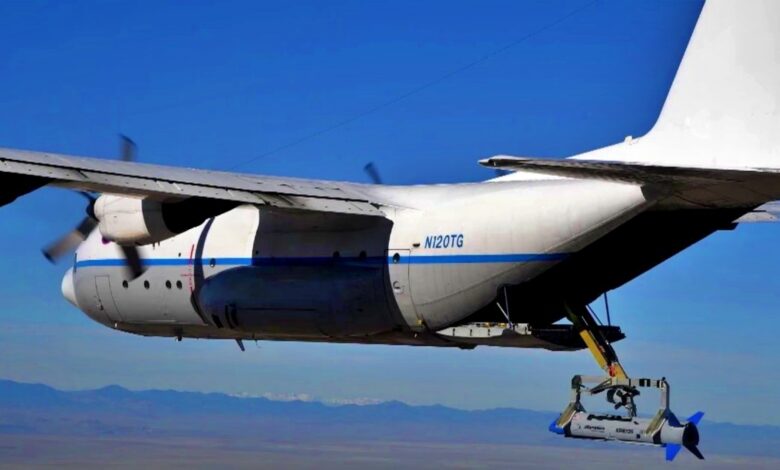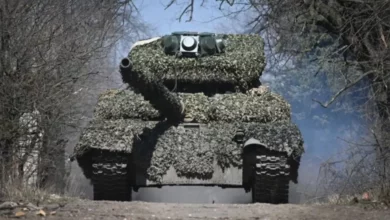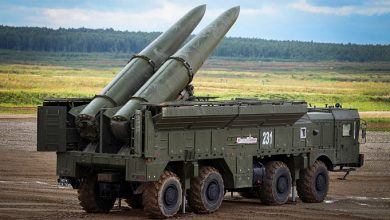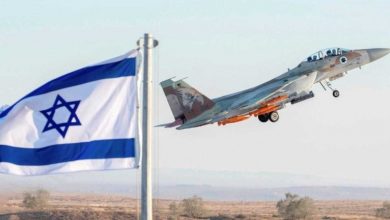A C-130 has been tested as an ‘airborne aircraft carrier’

Catching a drone with a large aircraft can help the military reuse these flying robots—and perhaps even someday deploy swarms of them. In this test, the C-130 acted as an ‘airborne aircraft carrier’.
In the sky above the desert, a drone mated with a C-130, a cargo plane that was acting as an airborne aircraft carrier. Once its landing hook attached to the C-130’s recovery latch, the drone’s wing rotated 90 degrees, becoming flush with its body, so that it could fit within the cargo plane’s storage bay. Pulled into the crane-like gripper of the C-130’s retrieval arm, the drone lands in its ride in the sky.
On November 5, DARPA announced that Gremlins, its long-in-the-works program to make an air-launched and air-recoverable drone, successfully demonstrated airborne recovery. The flight test, which took place in October, featured two Gremlin drones flying a series of checks. One of those Gremlins latched onto and was loaded inside the C-130. The other, as Defense News reports, crashed during the tests.
“Airborne recovery is complex,” Paul Calhoun, DARPA’s program manager for Gremlins, said in a release. “We will take some time to enjoy the success of this deployment, then get back to work further analyzing the data and determining next steps for the Gremlins technology.”
The Gremlins program dates back to at least 2015, though the concept of aircraft launched and recovered from other aircraft has a much longer history. The utility is straightforward: small vehicles have less capacity for fuel, weapons, or other payloads, so it makes sense to deliver them inside a bigger, more efficient craft, which can then pick them up again. Meanwhile, C-130s, the venerable workhorses of military cargo transport, are an ideal carrier craft. Reliable, durable, and spacious, a C-130 is good at getting where it needs to go.
As a lumbering cargo aircraft, C-130s are big targets for anti-aircraft weapons, but if the drones that they are launching into combat can fly the last leg of the journey on its own, the C-130 can stay safely out of range of an adversary’s weapons.
In the 1930s, the US Navy experimented with airships that could launch and recover biplanes from racks inside the craft. That recovery element is essential, especially for aircraft with a pilot on board, because it makes it a mission that pilots can fly away from. In the Cold War, the Air Force developed the trapeze-launched Goblin, an ultracompact jet fighter that could ride inside the bomb bay of a nuclear-armed bomber to protect it from other fighter jets.
Gremlins is not an exact continuation of prior aircraft-launched aircraft, though it shares some important principles. Being able to launch and recover from a rack inside the carrier means the drone doesn’t need to operate from a runway. With its fold-under wing and compact form, four Gremlins can fit in the pay of a C-130.
Being able to field four drones at once from a single C-130 would let the plane scout a wide area, or potentially launch attacks on several targets. Scouting is the most straightforward mission for a Gremlin, but it could also carry tools for electronic warfare, like jammers that mess up with sensors, and it’s possible future drones could be armed with bombs and other conventional weapons.
Even with the successful mid-air recovery of one of the Gremlin drones, much work needs to be done before the program represents a useful military tool. Future milestones likely include the launch and recovery of multiple drones. If that all works, then the Air Force will have a long-promised tool of drone warfare: a working swarm.
Swarms of multiple drones are one of the few ways to upset the balance between attacking aircraft and anti-air defenses. The cost calculus for decades has been that an anti-air missile is cheaper than the human-crewed plane it’s destroying, sometimes by orders of magnitude. That imbalance has led to the development of stealth planes, which are hard to hit but even more expensive. Drones bend the equation the other way, by creating multiple cheap targets that overwhelm defenses on hand.
Sending eight drones to do a mission that might have previously required two fighter jets means risking more airframes, but the drones are all more expendable than a fighter. If missiles take out part of the swarm, the remaining drones can still complete the mission and, now, return to be recovered in mid-air so that they can live to fly another day.
The successful recovery of a Gremlin in mid-air is a big step towards useful drone swarms. It makes Gremlins at least as successful as the crewed aircraft-borne-aircraft projects of the 1930s and 1940s. Should the program successfully demonstrate swarm launch and recovery, it will finally surpass the goblins and biplanes of the past.
Source: Popular Science





